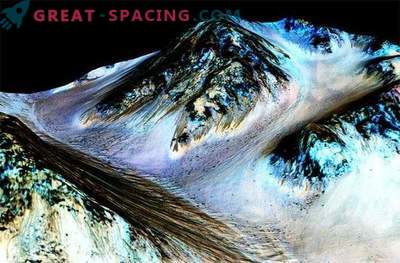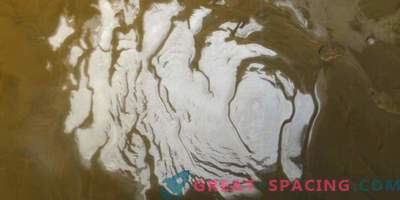
In front of you is the inner slope of a Martian crater with dark stripes - “repeating lines of slopes”. They are believed to form as granular streams. Photo captured by MRO HiRISE camera
Previously, the dark Martian lines were perceived as hints of the underground flow of water. But new data alludes to the fact that this is a slip of sand and dust grains. The analysis is performed by the HiRISE camera of the MRO apparatus. There is a suspicion that a certain amount of water is still involved in the process, but they have not yet figured out how the streams begin.
These features were recorded in 2011 and immediately identified as points of water location. They are dark lines, gradually expanding downwards in the warmer season and disappearing in winter. In terrestrial conditions, such processes are carried out in the presence of life, but it is difficult to understand how this happens in the dry Martian desert.
There are thousands of such features and together they are called “repeating lines of slopes”. HiRISE camera data is important because it includes 3D models of slope steepness. Scientists examined 151 features in 10 locations. Almost everywhere the level of the slope is 27 degrees. The fact that they are subject to the seasons may indicate the presence of water, which is enough to maintain and develop life. But if this is so, then it is incredibly difficult to explain how water managed to survive in such conditions. As part of the features there are hydrated salts, where water molecules are associated with the crystal structure.
It is possible that the salts become hydrated by pulling water vapor out of the atmosphere, as a result of which a drop of salt water is created. Then the change of seasons leads to a trigger mechanism flow. Change and fading can also be accomplished by changes in hydration.
Scientists believe that a full understanding of the flow is possible only when studying on site. There is a chance that they are wet enough to maintain life forms. But it will be important to protect the site from terrestrial microbes, so as not to spoil the study.











































